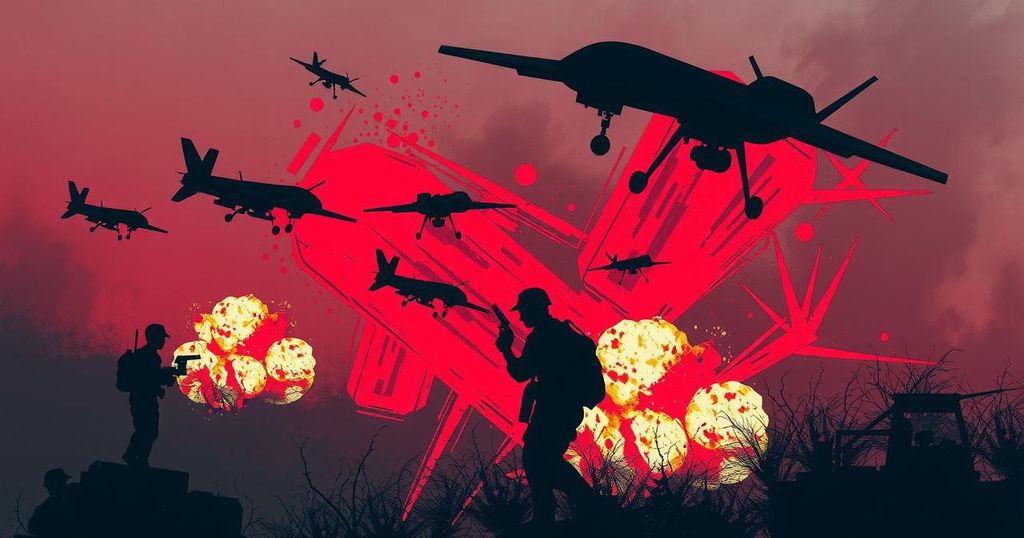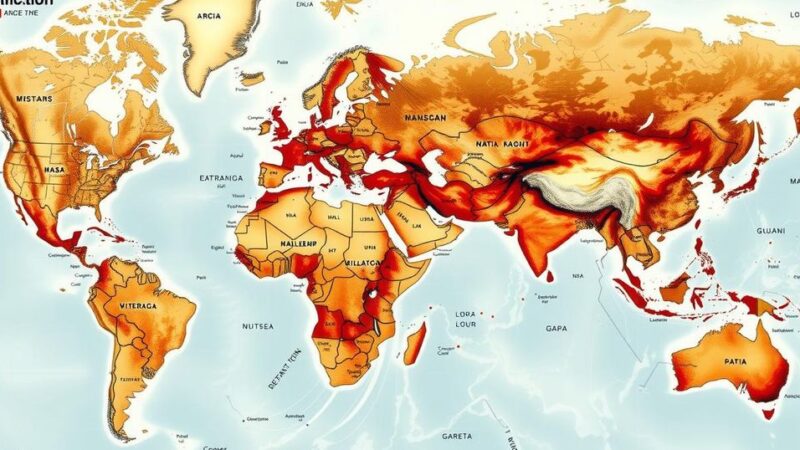U.S. airstrikes targeted over 30 Houthi sites, aiming to weaken Iranian influence. While considerable military casualties were reported, claims of civilian casualties were not substantiated. President Trump stated Iran would be held accountable for Houthi retaliations, even as diplomatic efforts were attempted amidst escalating tensions. Views on U.S. involvement vary, with some questioning the necessity of military action.
In recent U.S. airstrikes, military forces targeted over 30 Houthi positions, destroying drone, missile, and air defense systems in an effort to challenge the Iranian regime’s influence. Joint Staff Director for Operations Lt. Gen. Alexus Grynkewich noted that these strikes resulted in numerous military casualties but no credible reports of civilian harm. The strikes aimed to disrupt various Houthi capabilities, including terrorist training sites and weapons manufacturing facilities.
As these operations unfolded, Yemen’s Houthi rebels reported significant losses, claiming 53 fatalities, including children. Pentagon spokesperson Sean Parnell stated that the strikes were a direct response to attacks on American personnel. He clarified that these actions do not aim for regime change but rather prioritize U.S. interests.
President Donald Trump emphasized that while the Houthis are being targeted, Iran would be held accountable for any retaliation. He declared that future assaults by the Houthis would elicit decisive military responses, indicating a direct connection between Iran and Houthi actions. Trump described Iran’s influence on the Houthis as substantial, asserting that all attacks would be perceived as acts of aggression from Iran itself.
The Houthis vowed to intensify their assaults in the Red Sea, linking their actions to humanitarian pressures in Gaza. Although Trump attempted a diplomatic approach by reaching out to Iran for nuclear discussions, Tehran dismissed these overtures amid escalating tensions linked to U.S. sanctions.
As operations continue, Trump asserted that military engagement would persist until the Houthi threat is neutralized. Nevertheless, the exact parameters for such elimination remain ambiguous, particularly in light of ongoing Houthi provocations.
While the U.S. military showed reluctance to comment on potential troop deployments to Yemen, experts like Zineb Riboua have suggested that the strikes aim to dismantle sites that enable Houthi aggression against shipping routes. However, the outcome is contingent upon whether these actions hinder Houthi capabilities, especially with Iran’s ongoing support.
Secretary of State Marco Rubio noted that Houthi attacks on U.S. Navy vessels have significantly increased, intensifying the urgency to address their aggressions in critical trade routes like the Red Sea. Various voices in the debate, including former Navy personnel and defense policy analysts, argue about the U.S. responsibility in the conflict and the need for a strategic approach rather than solely military interventions.
In summary, the recent airstrikes by U.S. forces targeting Houthi capabilities represent a significant shift in military engagement aimed at countering Iranian influence in the region. President Trump’s promise of a strong response to any Houthi assaults signals a stringent stance on U.S. foreign policy regarding Iran and its proxies. However, the broader implications of these strikes highlight ongoing complexities in determining the effectiveness and strategy of U.S. military involvement.
Original Source: www.foxnews.com






